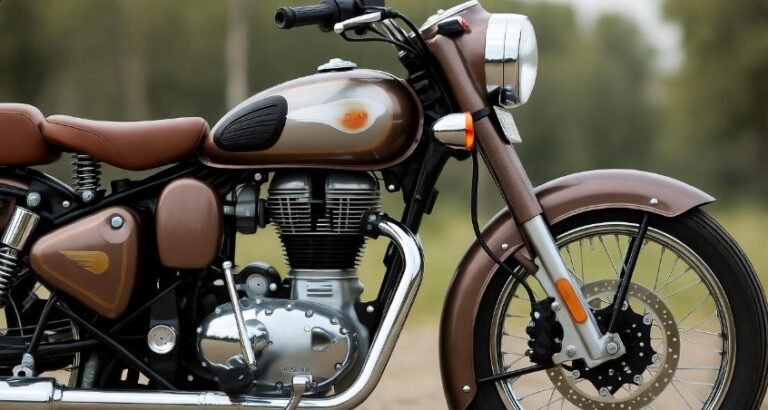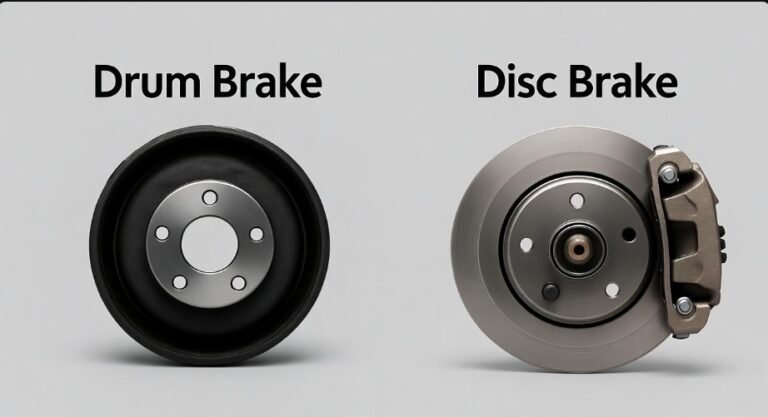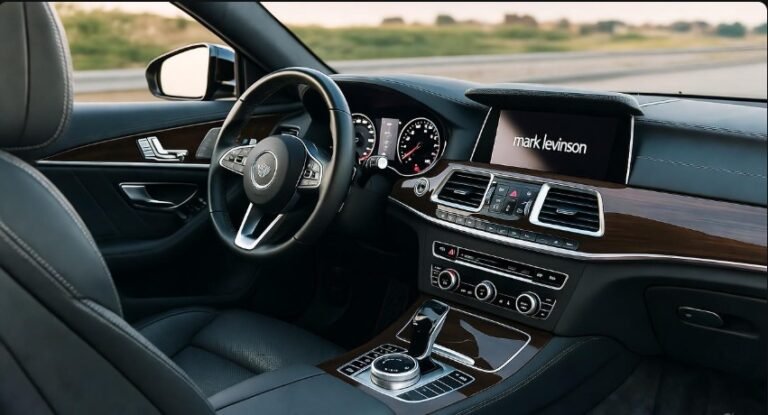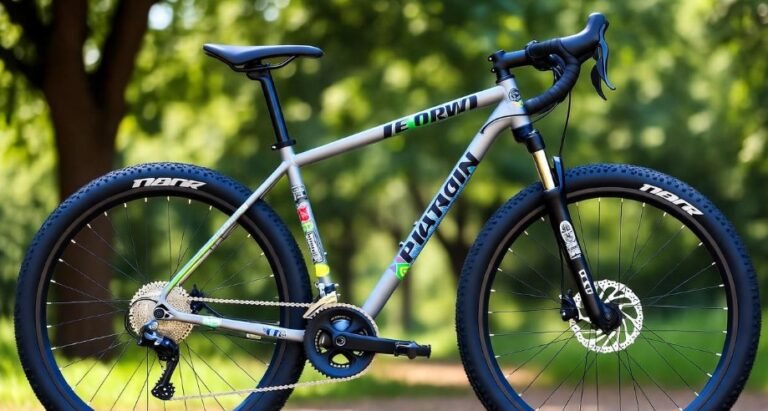Gear and Disc Brake Cycle: Ultimate Ride
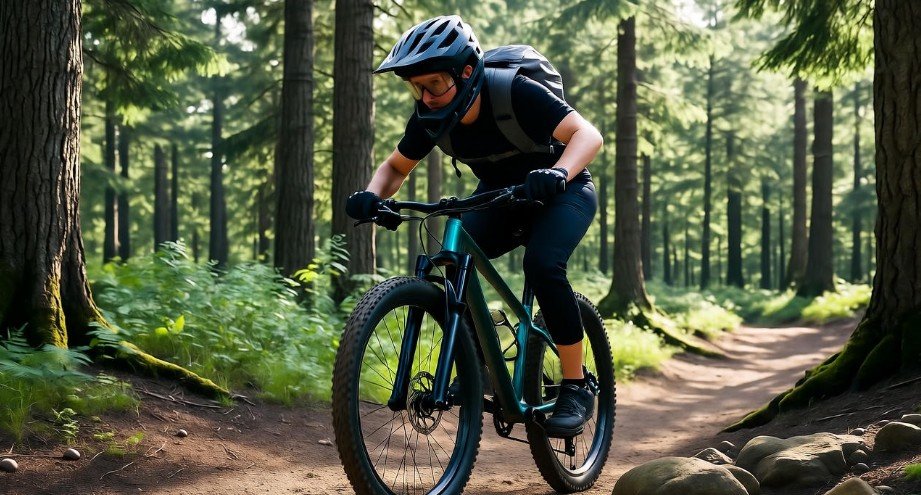
The gear and disc brake cycle ensures your bicycle offers superior control and efficiency. Understanding how these systems work together is key to a safer, smoother, and more enjoyable “ultimate ride,” whether you’re commuting in the city or tackling challenging trails.
In This Article
- 1 Key Takeaways
- 2 Understanding Your Gear System: The Engine of Your Ride
- 3 The Power of Disc Brakes: Ultimate Stopping Control
- 4 The Gear and Disc Brake Cycle: Synergy for the Ultimate Ride
- 4.1 Riding Uphill: The Climb
- 4.2 Riding Downhill: The Descent
- 4.3 Riding on Flat Terrain: The Cruise
- 4.4 Riding in Mixed Conditions: The All-Rounder
- 4.5 Pro Tip: Practice makes perfect! Spend time finding the right gear before you hit a hill or descent. Similarly, get comfortable with how much pressure to apply to your brake levers for smooth stops and turns.
- 5 Essential Maintenance for Your Gear and Disc Brake Cycle
- 6 Choosing the Right Gear and Disc Brake Cycle for You
- 7 Frequently Asked Questions (FAQ)
- 7.1 Q1: What is the main advantage of disc brakes over rim brakes?
- 7.2 Q2: How do I know if I need to adjust my gears?
- 7.3 Q3: Can I convert my bike from rim brakes to disc brakes?
- 7.4 Q4: How often should I get my bike professionally serviced?
- 7.5 Q5: Are hydraulic disc brakes difficult to maintain?
- 7.6 Q6: What does “gear ratio” mean in simple terms?
- 8 Conclusion
Key Takeaways
- Master gear and disc brake cycles for ultimate ride control.
- Disc brakes offer superior stopping power in all conditions.
- Gears optimize pedaling efficiency and tackle varied terrains.
- Proper maintenance extends the life of your gear and brake systems.
- Combine gear and brake knowledge for confident cycling.
- Explore the benefits of a well-maintained cycle.
Navigating the world of cycling can sometimes feel complex, filled with terms like “gear and disc brake cycle” that might sound intimidating. You might wonder if your bike has these features and how they actually benefit your ride. If you’ve ever struggled on a steep hill or felt a lack of confidence during a sudden stop, understanding your bike’s braking and gear systems is crucial. This guide will simplify everything, showing you step-by-step how your gear and disc brake cycle contributes to an ultimately superior cycling experience. Get ready to ride with more control and confidence!
Understanding Your Gear System: The Engine of Your Ride
Your bicycle’s gear system is like the transmission in a car. It’s designed to make pedaling easier and more efficient by allowing you to adjust the resistance you feel. This is incredibly important when you encounter different riding conditions, such as going uphill, downhill, or riding on flat terrain. Without gears, you’d be stuck with one level of resistance, making climbs exhausting and descents potentially too fast to control.
How Bicycle Gears Work
At its core, a bicycle gear system uses a set of front sprockets (chainrings) attached to your pedals and a set of rear sprockets (cogs or cassette) attached to your rear wheel. A chain connects these sprockets. When you shift gears, you’re essentially moving the chain to different-sized sprockets.
- Front Gears (Derailleur): The front derailleur typically controls the chain moving between two or three chainrings of varying sizes. Larger chainrings are generally used for higher speeds on flat or downhill terrain, while smaller chainrings are used for easier pedaling on climbs.
- Rear Gears (Derailleur): The rear derailleur controls the chain moving across a cluster of many sprockets (the cassette) on the rear wheel. These sprockets are usually much smaller than the front chainrings and offer a wider range of resistance levels. Smaller cogs on the rear provide more resistance for speed, while larger cogs offer less resistance for climbing.
The Chainring-to-Cog Ratio
The combination of front chainring size and rear cog size determines your “gear ratio.” This ratio dictates how many times the rear wheel turns for each full revolution of your pedals. A higher gear ratio (large front chainring, small rear cog) means the rear wheel turns many times per pedal stroke, allowing you to go faster on flat or downhill sections. A lower gear ratio (small front chainring, large rear cog) means the rear wheel turns fewer times per pedal stroke, making it much easier to pedal uphill, even though you’ll be moving slower.
Types of Gear Systems
Most modern bikes use a derailleur system, as described above. However, some bikes feature internal gear hubs. These systems house the gear mechanism within the rear hub, offering a cleaner look and less maintenance, though they can be heavier and more complex to repair.
The Power of Disc Brakes: Ultimate Stopping Control
Disc brakes have revolutionized cycling safety by offering significantly better stopping power and modulation than traditional rim brakes, especially in wet or muddy conditions. They are a staple on most modern mountain bikes and are increasingly common on road, gravel, and hybrid bikes.
How Disc Brakes Function
Disc brakes work on a simple yet effective principle: friction. A rotor (a metal disc) is attached to the hub of your wheel. When you squeeze the brake lever, a caliper mounted near the rotor engages, squeezing brake pads against the rotor. This friction slows down and stops the wheel.
Types of Disc Brakes
There are two primary types of disc brakes found on bicycles:
| Type | How They Work | Pros | Cons |
|---|---|---|---|
| Mechanical Disc Brakes | A standard brake cable pulls a lever on the caliper, which then forces the brake pads against the rotor. | More affordable, easier to service, compatible with standard brake levers. | Less powerful than hydraulic, can feel less nuanced, cable stretch can affect performance. |
| Hydraulic Disc Brakes | Brake fluid in a sealed system transmits force from the lever to the caliper, activating pistons that push the pads against the rotor. | Superior stopping power, excellent modulation (fine control), self-adjusting pads, consistent performance. | More expensive, require specialized tools for maintenance (bleeding), system can be damaged by leaks. |
Benefits of Disc Brakes
The advantages of disc brakes are numerous and directly contribute to the “ultimate ride” experience:
- Weather Performance: Disc brakes are largely unaffected by water, mud, or grit, which can severely compromise rim brake performance. This means you can brake confidently in rain, snow, or on dusty trails.
- Consistent Power: They provide reliable stopping power every time you pull the lever, regardless of rim condition or contamination.
- Modulation: Hydraulic disc brakes, in particular, offer excellent modulation, allowing you to precisely control how much braking force you apply. This prevents sudden lock-ups and allows for smoother deceleration.
- Reduced Wheel Damage: Unlike rim brakes, which wear down the rim’s braking surface, disc brakes do not interact with the wheel itself, preserving its integrity.
For a deep dive into brake technology, you can explore resources from organizations like the National Highway Traffic Safety Administration (NHTSA), which offers general safety guidelines applicable to all vehicle braking systems.
The Gear and Disc Brake Cycle: Synergy for the Ultimate Ride
The “gear and disc brake cycle” isn’t a physically connected mechanism but rather the symbiotic relationship between your gear system and your disc brakes, working in tandem to provide optimal control and efficiency on your bicycle. Understanding how to use them together is what elevates your riding experience.
Riding Uphill: The Climb
When you face an incline, your body naturally wants to shift into an easier gear. This is where your gear system shines. As you shift to a smaller front chainring and a larger rear cog, the resistance decreases, making it easier to pedal. This allows you to maintain momentum and conserve energy. Simultaneously, your disc brakes offer precise control. If you need to slow down or stop even for a moment on the hill, your brakes will engage smoothly and powerfully, meaning you won’t roll backward unexpectedly.
Riding Downhill: The Descent
Descents require a different approach. You’ll want to shift into a higher gear (larger front chainring, smaller rear cog) to allow for higher speeds and efficient pedaling if needed. Your disc brakes are absolutely critical here. They provide the confidence to control your speed, even on steep descents or when encountering unexpected obstacles. The modulation of hydraulic disc brakes allows you to feather the brakes, slowing down gradually rather than slamming on the brakes and risking a skid or loss of control. This is where the “ultimate ride” truly benefits from reliable stopping power.
Riding on Flat Terrain: The Cruise
On flat ground, you’ll typically use a mid-range gear combination that allows you to maintain a comfortable pedaling cadence and speed. Your disc brakes are still important for anticipating traffic, pedestrians, or other cyclists, allowing you to react quickly and safely if necessary without compromising your smooth momentum.
Riding in Mixed Conditions: The All-Rounder
The true beauty of the gear and disc brake cycle is its adaptability. Whether you’re navigating city streets with unexpected stops, hitting a trail with varied gradients, or enjoying a leisurely ride, these systems work together. You shift gears to optimize your effort and disc brakes to manage your speed and ensure safety. The seamless integration means you can focus on enjoying the journey, not fighting your equipment.
Pro Tip: Practice makes perfect! Spend time finding the right gear before you hit a hill or descent. Similarly, get comfortable with how much pressure to apply to your brake levers for smooth stops and turns.
Essential Maintenance for Your Gear and Disc Brake Cycle
To ensure your gear and disc brake cycle performs at its best, regular maintenance is essential. This isn’t just about longevity; it’s about ensuring your safety and maximizing your riding enjoyment. Think of it like essential car maintenance, keeping your vehicle running smoothly and reliably.
Gear System Maintenance
A well-maintained gear system shifts smoothly and quietly. Here’s what you should do:
- Clean Your Drivetrain: Regularly clean your chain, cassette, and chainrings. A degreaser and brush work wonders. A dirty drivetrain leads to poor shifting and premature wear.
- Lubricate Your Chain: After cleaning and drying, apply a suitable bicycle chain lubricant. Wipe off excess lubricant to prevent it from attracting dirt.
- Check for Wear: Chains, cassettes, and chainrings wear out over time. A worn chain can skip or cause accelerated wear on other components. Many bike shops have chain wear indicators.
- Adjust Derailleurs: If your shifting is sluggish or inaccurate, your derailleurs may need adjustment. This involves adjusting cable tension and limit screws.
For detailed instructions on derailleur adjustment, resources from reputable cycling organizations like USA Cycling often provide excellent technical guides.
Disc Brake System Maintenance
Disc brakes require a bit more attention, especially hydraulic ones, but the payoff is significant:
- Keep Rotors Clean: Avoid touching the rotor surface with your fingers, as skin oils can contaminate it and squeak. Clean rotors with isopropyl alcohol and a lint-free cloth.
- Inspect Brake Pads: Check your brake pads for wear. When the pad material is getting thin, it’s time for replacement.
- Check for Leaks (Hydraulic): Inspect brake lines and levers for any signs of fluid leaks.
- Bleed Hydraulic Brakes: Over time, air can enter the hydraulic system, making the brakes feel spongy. Hydraulic brakes need to be “bled” periodically to remove air and replace old fluid. This is a more advanced maintenance task.
- Adjust Mechanical Disc Brakes: Mechanical calipers have adjustment barrels to fine-tune pad wear and cable tension.
Maintenance Schedule Example
Here’s a general guideline for maintenance:
| Frequency | Gear System Maintenance | Disc Brake Maintenance |
|---|---|---|
| After Every Ride | Wipe down chain if dirty. | Wipe rotors with a dry cloth if wet or dirty. |
| Weekly (or every 100 miles) | Clean and lubricate chain. | Inspect brake pads for wear. |
| Monthly (or every 500 miles) | Inspect drivetrain for wear, check derailleur alignment. | Clean rotors with isopropyl alcohol. |
| Bi-Annually (or as needed) | Professional tune-up, check for component wear. | Bleed hydraulic brakes (if feeling spongy), adjust mechanical brakes. |
Remember, these are general guidelines. Harsh riding conditions (heavy rain, mud, dust) may require more frequent maintenance. Consulting your bicycle’s owner’s manual or a local bike shop can provide specific recommendations for your model.
Choosing the Right Gear and Disc Brake Cycle for You
When you’re looking to purchase a new bicycle or upgrade your current one, understanding the gear and disc brake systems will help you make an informed decision. The “ultimate ride” is subjective, but it always involves equipment that suits your needs and riding style.
Consider Your Riding Style
- Commuting/Urban Riding: You’ll want a reliable gear system for varied city terrain and powerful disc brakes for traffic. Hydraulic disc brakes offer the best control. Often, bikes with 1x (single front chainring) drivetrains and internal gear hubs or reliable derailleurs are popular.
- Mountain Biking: This is where disc brakes (almost exclusively hydraulic) and robust gear systems with a wide range of low gears are essential for conquering steep climbs and technical descents.
- Road Cycling: Modern road bikes often feature hydraulic or mechanical disc brakes for improved all-weather performance. They typically have gear systems optimized for speed, with fewer, tighter gear ratios.
- Gravel/Adventure Riding: This category often blends road and mountain bike features, benefiting from a wide gear range and the all-weather reliability of disc brakes.
Key Features to Look For
- Number of Gears: More gears generally offer a wider range for tackling varied terrain. A common setup for hybrid bikes might be 2×8 or 3×8 (two or three chainrings with eight cogs in the rear). Mountain bikes might have 1×11, 1×12, or even 2×10 setups.
- Brake Type: For most riders prioritizing safety and performance, hydraulic disc brakes are the gold standard. Mechanical disc brakes are a good budget option.
- Component Quality: Brands like Shimano and SRAM are major manufacturers of bicycle components. Higher-tier groupsets (e.g., Shimano Deore vs. Shimano XT, SRAM NX vs. SRAM GX) offer smoother shifting, lighter weight, and increased durability.
Many reputable sources, like Bicycling Magazine, offer comprehensive guides on selecting the right bike for your needs.
Frequently Asked Questions (FAQ)
Q1: What is the main advantage of disc brakes over rim brakes?
A1: The main advantage of disc brakes is their superior stopping power and consistent performance, especially in wet, muddy, or dusty conditions. They are less affected by rim wear and wheel damage.
Q2: How do I know if I need to adjust my gears?
A2: You should adjust your gears if they are noisy, slow to shift, skip when pedaling, or don’t engage properly. This usually means the derailleurs need fine-tuning.
Q3: Can I convert my bike from rim brakes to disc brakes?
A3: It’s often not straightforward or cost-effective. Your bike’s frame and fork need to be specifically designed with mounting points for disc brake calipers and hubs. Most bikes not sold with disc brakes cannot be converted.
Q4: How often should I get my bike professionally serviced?
A4: A good general rule is to get a professional tune-up once a year. If you ride frequently, especially in challenging conditions, you might need service every 6-12 months or as per the manufacturer’s recommendations.
Q5: Are hydraulic disc brakes difficult to maintain?
A5: Basic maintenance like cleaning is easy. However, tasks like bleeding the brakes to remove air require specialized tools and knowledge. Many riders opt to have hydraulic brakes serviced by a professional bike mechanic annually or if they notice a decrease in performance.
Q6: What does “gear ratio” mean in simple terms?
A6: Gear ratio tells you how hard it is to pedal. A low gear ratio (easier) is like an “easy button” for your legs, great for climbing. A high gear ratio (harder) lets you go faster on flat or downhill sections, but requires more effort.
Conclusion
Understanding and utilizing the synergy between your bicycle’s gear system and its disc brakes is fundamental to achieving an “ultimate ride.” By mastering how to select the right gear for the terrain and relying on the dependable stopping power of disc brakes, you unlock a level of control, safety, and efficiency that transforms your cycling experience. Regular maintenance ensures these vital components remain in peak condition, providing confidence on every journey, from daily commutes to adventurous explorations. Embrace this knowledge, keep your bike tuned, and enjoy the freedom and exhilaration of riding smarter and safer.

